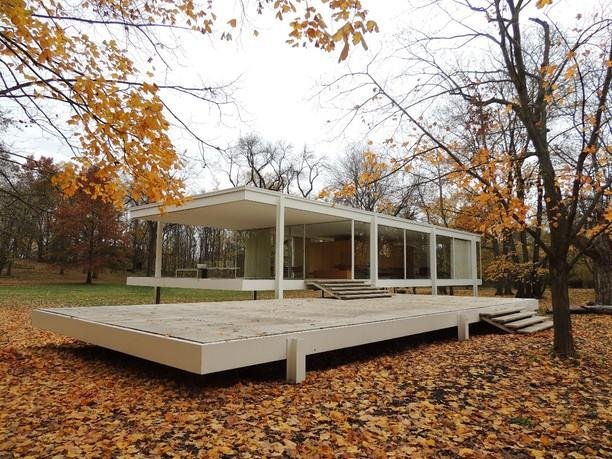As we discussed in part I of anthology of houses series about evolution of an experimentation, in part II we shall discuss the larger operative metaphor that has been experimented on houses and enable larger architectural discourses and influenced the academics and practices around the world. The modern life, the world of activity has created own objects: pen, typewriter, furniture, ocean liner, likewise house needs to be re-invented from clutches of pilasters, crowns and so on. The house is a machine for living in, it acquires clean air, full sunlight, and beauty in harmonious proportions. The house as a living machine is retracting self from retreat mode to transactional mode. House is a part that enables various parts of engagement of self and the working of everyday life.
Le Corbusier passionately demonstrated the practice of contemporary architecture of houses through industrial principle of construction (Dom- ino), and exaggerated sequencing of program. He was influenced by three large factors: Study of Nature, German influence :
- Monumentality of industrial form
- Bauhaus and Industrial design
- spirit of functionalism, Dom- Ino Construction
The programmatic shift that inspired Corbusier was the term “architectural Promenade”, means sequencing of spaces and movement pattern while arranging the functions. The intent was to expand and exaggerate the program of house that enables unveiling of various spaces. This was the earlier experiment with architectonics and exaggerated program. The machine for living in now engulfed into the sequencing of time and space. The ideal of Dom-Ino construction, sequencing of spaces and exaggeration of program attained its full maturity in Villa Savoye. The house and program are no longer the terrain of arresting the ground plane and horizontality of sequencing but rather elevating the same and creating movement vertically.
Each space is part of large centrifugal force of movement system, and yet attains their own unique situation with respect to what it arrests outside and what is attains inside through out the day. The metaphor of house is a machine that are subjected to experience that enhance the living intensely. “The Mathematics of the Ideal Villa”, as Colin Rowe pointed, the similarity between the spatial subdivision of a Palladian villa and the structural grid of a villa by Le Corbusier. Both villas shared a similar proportioning system and a relationship to a higher mathematical order. Le Corbusier’s villa was composed of horizontal layers of free space defined by the floor and roof slabs. The rooms varied in shape and were asymmetrically arranged at each level. Palladio’s plan insists on centrality, while Corbusier asserts within the self-imposed square. I.e., Spiraling quality of asymmetry
The contemporary practice that exists throughout the world is often unified & inclusive, not fragmentary and contradictory like so much of the production of the first generation of modern international architects. The minimum form & reduction of program, almost nothing type construction confirms the Mies ideal of anti- individual & architecture that precariously trapped between art & Kitsch of forties and fifties. The “Almost Nothing” is a metaphor of amalgamation of program and material so much that building can change its functionality at any given time. The first generation of internationalist architect owe much to the Mies ideal and Farnsworth house.
Mies said: “We should attempt to bring nature, houses, and the human being to a higher unity”. Glass walls and open interior space are the features that create an intense connection with the outdoor environment, while providing a framework reduces opaque exterior walls to a minimum. The careful site design and integration of the exterior environment represents a concerted effort to achieve an architecture wedded to its natural context.
The idea of a Case Study house, designed by Charles Eames was to hypothesize a modern household, elaborate its functional requirements, and develop a design that met those requirements using modern materials and construction processes, and then to actually build the homes. The experimentation with program and modern technique redefined the modern home and modern households. It sets the new construction materials and methods in housing that continue to influence till date. This house literally challenged the relationship between living and working spaces, and mobilized the newer way of imagining architecture.
Kahn earlier experiments with his buildings into what he called served spaces (primary areas) and servant spaces (corridors, bathrooms, etc.) The Esherick house is organized into four alternating served and servant spaces, which in this case are parallel two-story strips that run the full width of the house between front to back. The house program is divided into opaque and transparent spaces. The early works of Kahn created a kind of post-Miesian space: an asymmetrical architecture of ‘almost nothing’, which depended no longer on the manifestation of structure as frame, but rather on the manipulation of surface as the ultimate agent for the revelation of light, space and support. This house sets the program into well-articulated two cuboid volume that are oriented differently. The skin of the house is clearly demonstrating the division of program so as to have larger opaque and controlled transparent perforations.
This phase brought about a maturing of early years of experimentation of techniques and program into more complex way of handling program and their spatial articulation.
Image Credit: https://www.worthpoint.com/worthopedia/lego-architecture-farnsworth-house-1865656047


Leave a comment